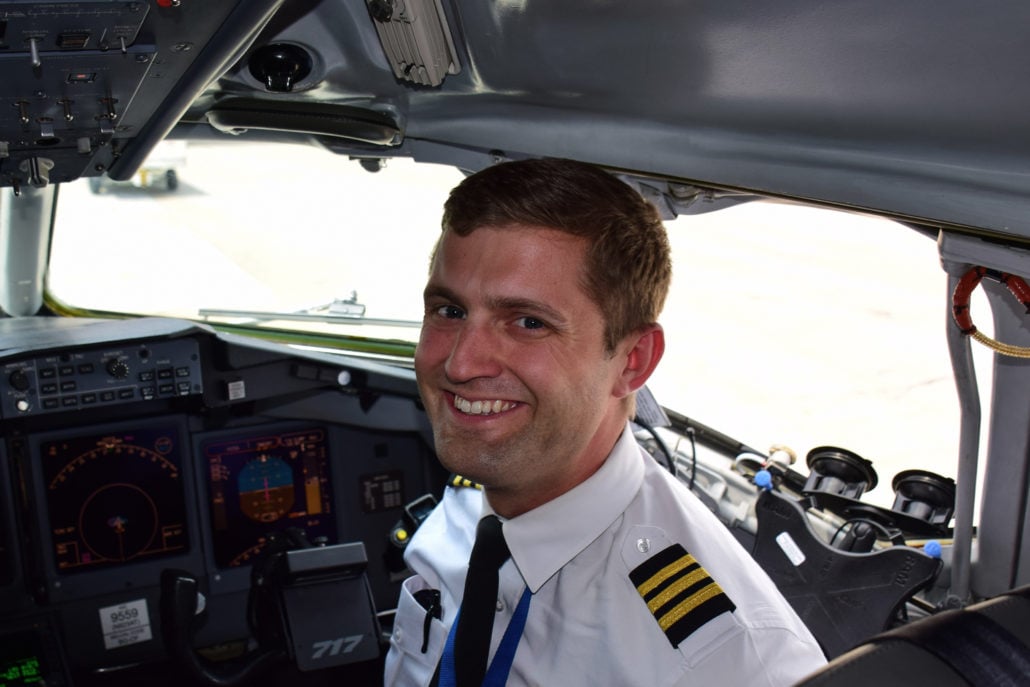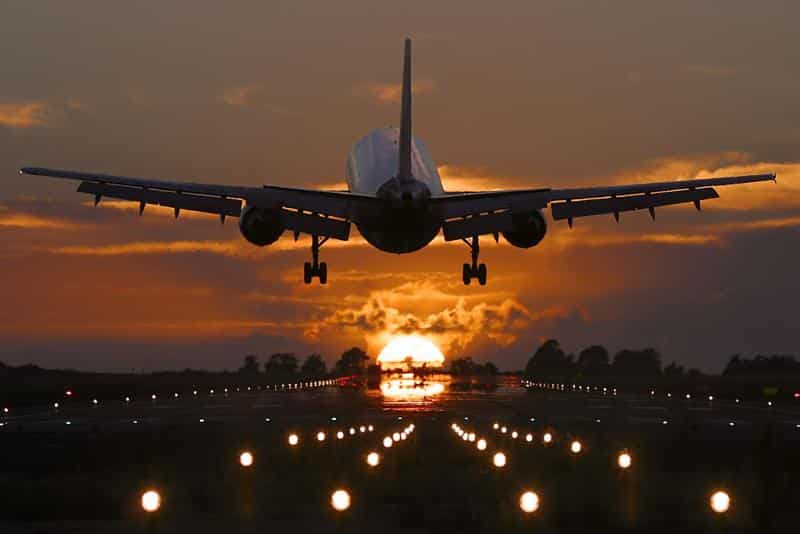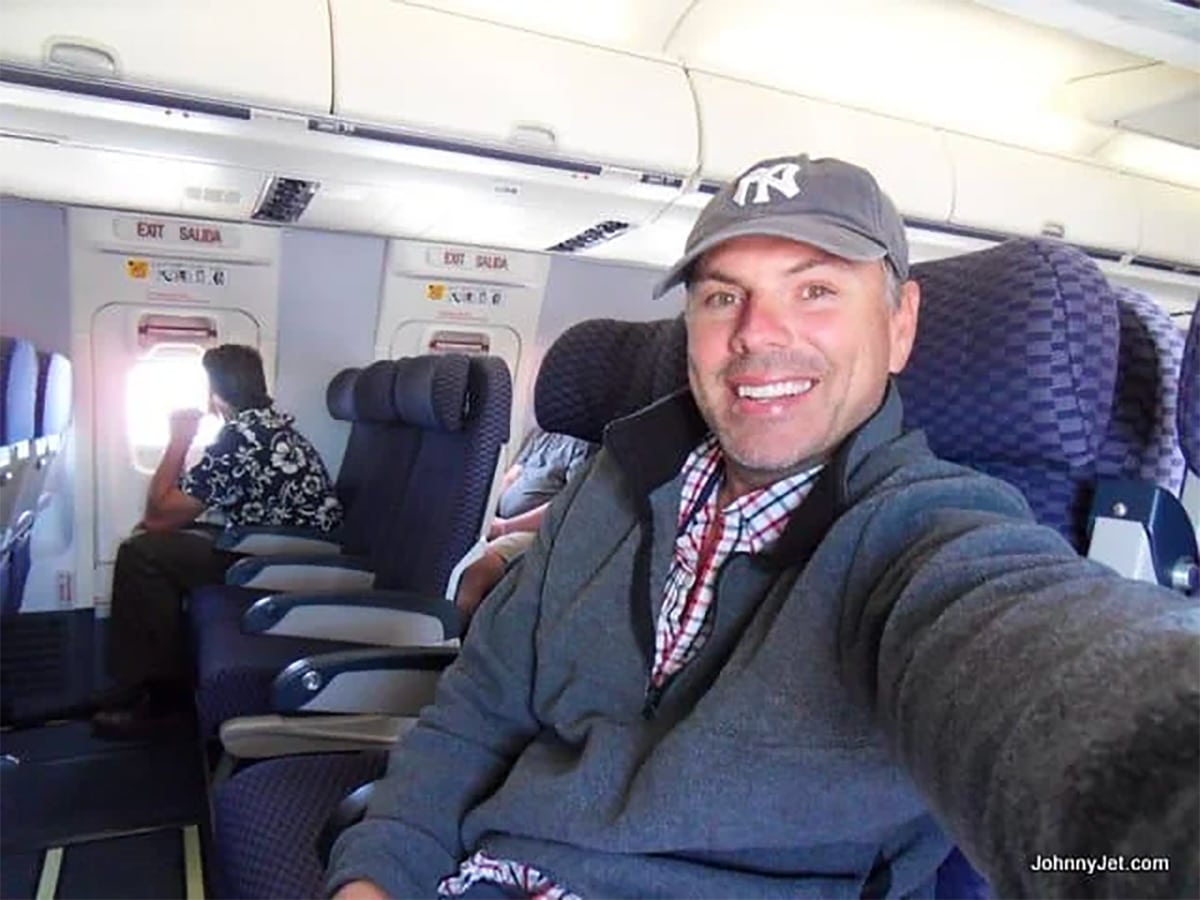
In our Ask a Pilot series, pilot Spencer Marker answers one of your aviation-related questions each week. See past installments here and submit your own to Whitney@johnnyjet.com.
Question
Hi Spencer. The last time I flew, it was quite windy while we were landing. I also noticed that the pilot landed on the left wheel first, before touching down on the right. Is this normal? I thought both back wheels had to touch down at the same time!
—Mike P.
Answer
Hi Mike, thank you for writing in this week! What I believe you are describing is a crosswind landing. And it seems like it’s a pretty well-executed one! While touching down on one wheel at a time may seem unusual or unsafe, I can personally assure you that it’s completely normal. In fact, when the winds are howling, it’s the way pilots are trained to bring the airplane to the ground safely.

What is a crosswind?
Pilots always prefer to take off directly into the wind. But rarely is that the case. In most instances, the wind is blowing from an angle. We call this a crosswind. This angled wind requires pilots to employ specifically trained-for techniques while taking off and landing.
In most cities, airports are designed with the prevailing wind in mind. This way, the runway layout can be arranged in such a way that the majority of the time, airplanes are taking off into the wind. In some places, like at Chicago’s O’Hare International Airport, the wind rarely blows from a constant direction, which forced designers to build multiple runways in multiple directions. While this eases the pilot’s burden of taking off into strong crosswinds, it reduces the airport’s capacity, as many of these runways cross one another and cannot be used simultaneously. Chicago is currently working to build more parallel runways to ease congestion.
So how do pilots manage crosswinds during takeoff?

YouTube user TopFelya captures a great crosswind takeoff from an Emirates A380.
Each airplane is designed to handle crosswinds, albeit with limitations. My current airplane can handle 38 knots (nautical miles per hour) of crosswind, or about 44mph. In conditions like these, pilots have to be aware of the aerodynamic effects on the airplane.
In the wind, airplanes have a tendency to weathervane. Much like the weathervane on a roof, this is the tendency of an airplane to align its nose with the wind. When a large airplane is stationary, the weight and friction on the tires keep it from turning into the wind. However, during takeoff, pilots must diligently use the airplane’s rudder in the opposite direction of the wind to keep the jet rolling straight down the runway.
Once the aircraft has broken ground, the crosswind will cause the airplane to drift laterally. Pilots counteract this effect by using the controls to bank the airplane into the wind slightly.
So to visualize, if the wind is from the left, we will turn the control wheel to the left, while using right rudder to steer the jet straight down the runway. The opposite is true when the wind is from the right. When the airplane is climbing safely away from the runway, the pilot will ease this correction and allow the airplane to crab (or point the nose slightly into the wind) as it climbs with the wing’s level.
So how do pilots manage crosswinds during landing?

YouTube user Cargospotter gives us a great example of a 747 performing a textbook crosswind landing.
Simply speaking, pilots manage crosswinds during landing in the exact reverse order they manage them taking off.
While landing with a strong crosswind, a pilot will approach the airfield with the nose of the airplane pointed slightly into the wind, but with the jet tracking down the centerline of the runway. Think of it like a canoe on a river. If you’re trying to paddle to a specific spot on the opposite bank, you must paddle slightly into the current, otherwise you will float down the river and miss your target!
Once the airplane nears touchdown, the pilot will press the rudder to align the longitudinal axis of the jet with the centerline of the runway. Left crosswinds require right rudder. Right crosswinds require left rudder. However, if a pilot does only this, the plane will begin to drift off to one side!
Just like with takeoff, to counteract this drift, the pilot must use the control wheel to bank the wings slightly into the wind. A properly executed crosswind landing technique will always result in the upwind wheel touching down first. So Mike, what you were describing is an airplane and a pilot making a proper crosswind landing.
To sum up
When one wheel touches down first, it may give off the perception that the pilot has made a mistake, or didn’t land the airplane properly. Both statements couldn’t be further from the truth. In reality, when the wind is blowing and one main wheel touches down before the other, it’s a sign that the pilots have employed crosswind landing technique properly.
Thanks again, Mike! Remember, if anyone has a burning aviation question or something you would like cleared up, drop us a line at Whitney@johnnyjet.com to get your question featured in an upcoming Ask a Pilot column.
Tailwinds,
—Spencer



